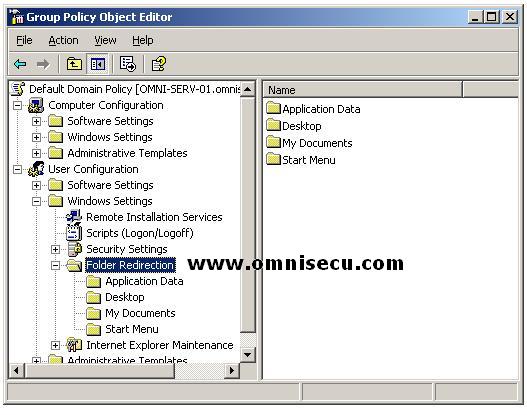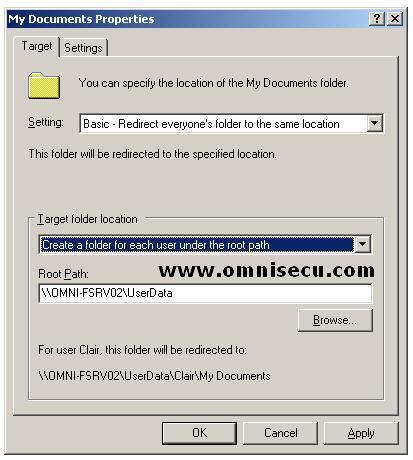User Profile Folder Redirection
In many enterprises, employees have access to more than one computer. By making use of redirected folders we can ensure that users have consistent access to their data is regardless of which computer they use. Redirected folders provide a centralized repository for user profile folders and data which is easy to manage. Using Folder Redirection, the redirected folders, reside on a server rather than on individual user computers.
In the case of roaming profiles, redirected folders reduce network traffic during user logon and logoff. By using folder redirection, both the users and system administrators are benefitted. Users get better access to their personal profile data, and they benefit from faster logon and logoff and administrators benefit from centralized management of user profiles and better control over user data.
By using folder redirection, we can redirect the following user profile folders.
• Application Data
• My Documents
• Start Menu
• Desktop
No other user profile folders can be redirected and therefore the following user profile
folders cannot be redirected:
• NetHood
• My Recent Documents
• Templates
• PrintHood
• SendTo
We can configure Folder redirection under User Configuration\Windows Settings\Folder. Separate policy settings for Application Data, My Documents, Start Menu and Desktop are avialable.
For each of these settings, there is a Basic and an Advanced configuration.
Basic: In the Basic configuration, every user configured policy setting is redirected to the same shared folder. Inside the shared folder, the Windows 2003 will create individual folders for each user to store their files and data.
Advanced: In the Advanced configuration, Active Directory security group membership determines which users' folders get redirected to which shared folder.
Here we will see an example of Redirecting "MyDocuments" folder (Basic Redirection).
1) Open User Configuration\Windows Settings\Folder Redirection.
2) The four folders that can be redirected (Application Data, My Documents, Start Menu, Desktop) are listed separately. Right-click the folder you want to redirect, and select Properties from context menu.
3) In the Settings combo box, choose Basic - Redirect Everyone’s Folder To The Same
4) In Target Folder Location combo box, these options are available.
• Redirect To The User’s Home Directory: If user’s home folder is configured in account properties, you can use this setting to redirect the My Documents folder to the same location as the home folder.
• Create A Folder For Each User Under The Root Path: Appends the user’s name to a designated network share. Individual user folders then become subfolders of the designated network share.
• Redirect To The Following Location: Allows you to specify a root path to a file share and folder location for each user.
• Redirect To The Local User Profile Location: Causes the default location of the user’s profile to be used as the location for the user data.
5) Under Root Path, enter the root path, which is normally a network share in UNC convention. In this case "\\OMNI-FSRV02\UserData". All the necessary folders and subfolders are created automatically by Windows the next time an affected user logs on. Click OK to apply the changes made and exit.

